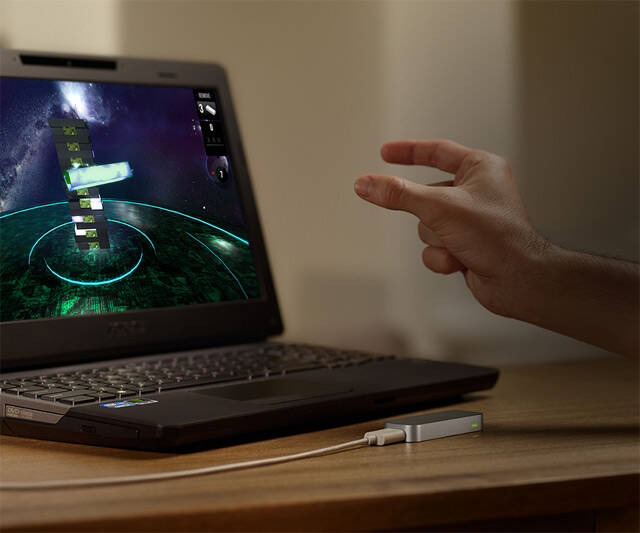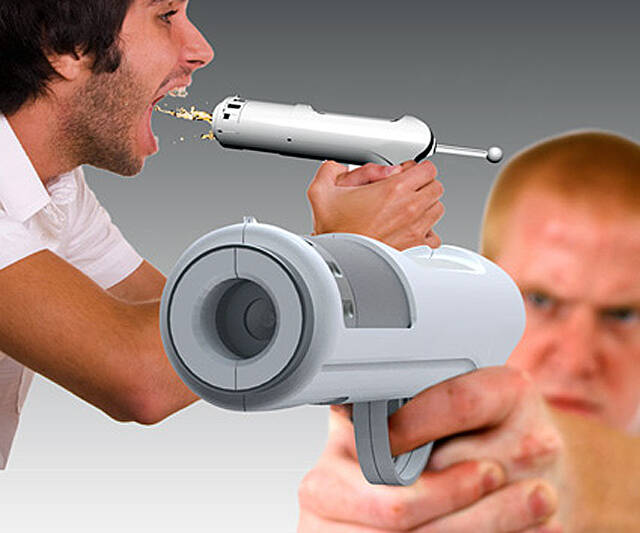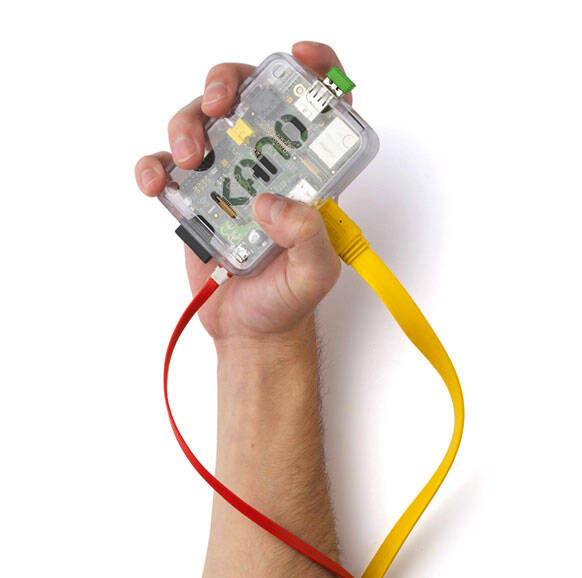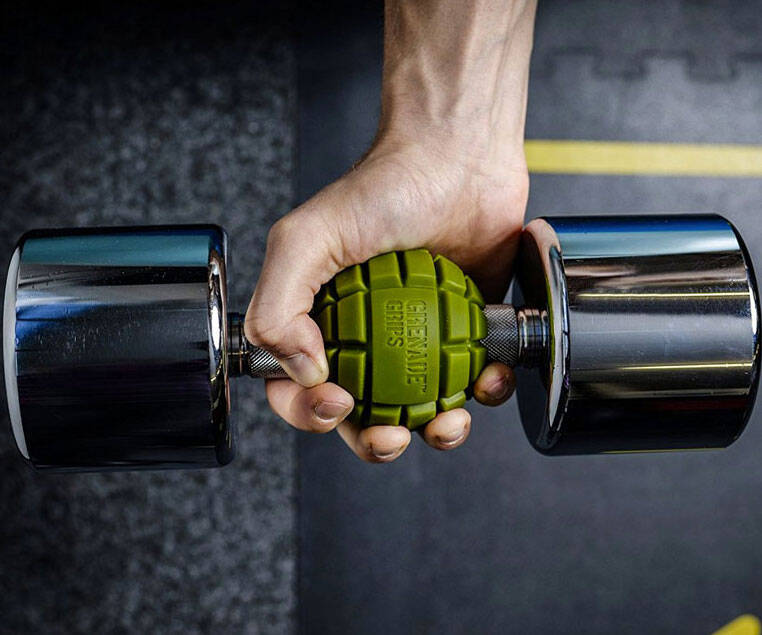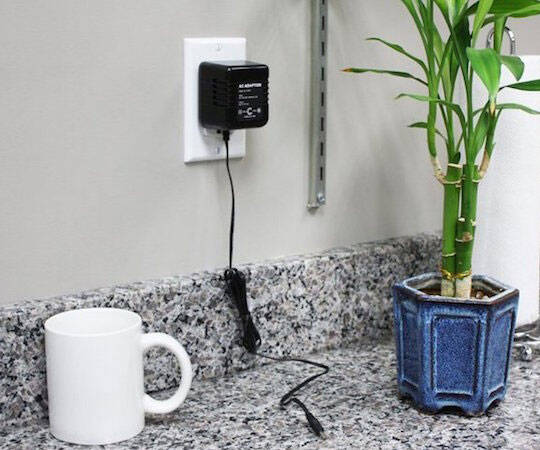Leap Motion Controller | ||||||||||
| ||||||||||
Product Description
The Leap Motion controller lets you interact directly with digital content on Windows PCs using your bare hands. (Legacy support for Mac OS X is also available.) quick setup: download the Leap Motion software, plug the device into your USB port, and you're ready to go. Download free apps for desktop and virtual reality on the Leap Motion gallery. If you're a developer, use the Leap Motion platform for maker projects, Virtual reality applications, and more. Real 3D interaction: 150-degree field of view creates a wide interactive space between you and your computer. Accurate, sub-millimeter hand tracking with extremely low latency.Features
- The Leap Motion Controller lets you interact directly with digital content on Windows PCs using your bare hands. Windows 7/8 or Mac OS X 10.7
- Quick setup: download the Leap Motion software, plug the device into your USB port, and you’re ready to go
- Download free apps for desktop and virtual reality on the Leap Motion Gallery
- If you're a developer, use the Leap Motion platform for maker projects, virtual reality applications, and more
- Real 3D interaction: 150-degree field of view creates a wide interactive space between you and your computer
- Accurate, sub-millimeter hand tracking with extremely low latency
Top Reviews
More of a toy, less of a tool (updated)by Kyle Biggs (3 out of 5 stars)
February 16, 2014
(Please scroll down for an update)
(VR Info added too)
I don't like giving negative product reviews, but I feel like this device may be a bit misleading for some.
Originally, I was very excited about this product. I tinker with things like the Microsoft Kinect, 3D mice, motion capture equipment and the Oculus Rift, and I thought this device would be a 'Kinect killer' of some sort. At one point during a press video, the Leap is shown displaying a pointcloud of the operator's hands, suggesting that the device was actually generating said pointcloud to do its calculations.
In reality, the Leap Motion actually uses complex algorithms to generate a best guess as to the position and orientation of the operator's hands. When you turn your hand sideways (not flat as shown in the pictures), it instantly loses track, so all gestures must be with a palm-flat orientation. Additionally, when you close your hand into a fist, it panics while trying to discern if it is seeing a fist or a single pointing finger. These things place huge limitations on how many, and what types of gestures one can make.
Please note that I tested my Leap on two computers, both with more than enough processing power, and both with USB 3.0. I ran all of the diagnostics, used the latest version of the software and drivers, and made sure environmental factors such as bright sunlight were not interfering.
Even with my precautions, I've yet to find a single app that allows me to do anything that can't be done with a mouse/keyboard or 3D mouse. As a pointer device, there is too much interpolation (Your finger will be stationary, the device will 'zero in' on its position, causing the on-screen pointer to slowly slide into place) and no 1 to 1 accuracy. As an audio controller or game controller, the device has a shockingly high failure rate at discerning gestures, making it unusable outside of a bit of playing around.
-This device will not provide skeletal tracking of your finger joints. I know it looks like it (see the main image with the blue background), but the joints shown are rough guesses as to where your fingers are.
- It cannot currently interpret rapid gestures like sign language, you need time between each gesture for the software to catch up, and you need to start each from a neutral pose it can understand.
-Because our displays are 2D, navigating 3D space is actually quite difficult, and is better left to 3D mice. It is fun for a minute to zoom around on Google earth, but it is still inferior to using another device.
+The Leap is a fun little device for impressing your friends or making a UI look high tech, but it isn't practical at all.
If you want to play around with the cool new technology shown here, or if some circumstance makes using traditional interface devices difficult/impossible, the Leap may be just what you need.
If you wish to use the device for anything practical outside of the above situation, or if you're expecting this device to be like a Kinect for your hands, wait for the next generation or for support of multiple devices. It simply isn't ready. It isn't fast enough, accurate enough, or mature enough to replace anything you already own. I applaud Leap and their break through, especially their reasonable pricing, but it just isn't there yet.
***Update 4/25/2014***
I have added one star to my rating of this product. After posting my review, I (and probably many others) was contacted and given a chance to take a peak at the updated software which was under development from the folks at Leap Motion. They were attempting to address some of the issues such as the one's noted in my review.
The results thus far have shown a marked improvement in latency reduction, joint tracking and accuracy. At this time, I still have no place for the Leap Motion in my array of hardware I use to interact with computers. I have high end joysticks, 3D mice, tablets, Microsoft Kinects, an Oculus rift and so on. Suffice to say I have many ways to interact with my machines. The Leap remains unplugged. My mouse still allows me to click icons and buttons faster and with more accuracy, my 3D mouse is still the only way to navigate 3D space and my wacom tablet is still the only device to be used for drawing or gestures.
I added a star primarily because the folks at Leap Motion actually seem to care about producing a great product. Unfortunately, at this time though, the product doesn't suit my needs, and my needs reflect those of the majority of computer users.
There is one area where the Leap may be truly useful though, and that is in the VR space. The current software release allow the leap to work while attached to the Oculus Rift. I will report back on this subject once I've tried it first hand.
***Update 4/26/2016*** All About VR
The developers behind the Leap have been working this whole time to improve their software. The latest drivers are the best yet at tracking, but VR is where things really shine.
You can get a bracket to attach your Leap to your Oculus Rift, DK1 or 2. I'm not sure how well it would work on a CV1 yet, but I'm sure they'll make an updated mount.
Once strapped to your face, the Leap can be used to track your hands within supported VR games and programs. There is an official demo for what they are calling Orion. In the demo you can create boxes by pinching your fingers together, and you can stack them, throw them, turn off gravity and toss them around. It sounds silly, but it is very compelling. The tracking was twice as good as it was when I first wrote this review.
As a consumer, if you find a program or game that uses the leap in VR, you probably won't regret buying one. But as a developer, there are still some issues. For me, the current implementation of the Leap in UE4 is just broken. My hands do not get attached to my character's body, which makes the whole thing useless. There is also the problem of the Leap's field of view. Since it can only track my hands when they're in front of me, I am limited in how I can use said tracking.
With that said, the Orion improvements are quite stunning. Should I find an app or game that is anything more than a few minutes of fun, I'll be adding a star or two to this review. Sadly, as of now, the device still doesn't do anything truly useful beyond novelty.
No-Brainer for Interested Developers
by Reppen (5 out of 5 stars)
November 14, 2015
This review is as a UI developer interested in new ways to control both 2D and virtual environments.
Before you judge it's ability to track movements, make sure you actually check out the visualizer in the control panel. Don't judge on the basis of a lot of the apps, which don't always translate the hand movements as well as they could.
It does tend to get confused any time your hands are very close together or fingers are blocking other fingers, etc. This should not be especially surprising and is not something they'll likely be able to mitigate any further than they already have until they do the obvious and make it possible to add a 2nd sensor mounted on your screen to fill in the missing data that the software is currently doing best-guess work to fill in. That said, I think they're making excellent use of the limited perspective difference they have from those sensors in a product this young.
What I have here is a very cheap way to start implementing wave of the hand type stuff, pinches, 3D manipulation, etc. There are some gestures that simply aren't going to work as well as others and that's okay for now. It's still opening up a whole world of opportunity that I'm looking forward to experimenting with and I don't think there's enough people out there taking a step back and going a little more abstract with 2D interface stuff.
Getting it to run was as easy as it gets. I plugged it in. Drivers installed. I downloaded the core app from the web and immediately started using it.
Whether this is a great product for non-developers really comes down to the quality of the software taking advantage of it and whether you have any use for it. In that regard, it certainly isn't indispensable yet. But for what it actually is, which looks like 3 IR sensors split about an inch apart looking to isolate and make sense out of your hands and forearms, the core software is doing a great job. The rest is up to the apps and the huge UI conversation that's starting to happen around these technologies.
If you're curious about it and the cost doesn't require severe adjustments to your weekend plans, you'll definitely get a few hours of fun out of it and have something neato to show friends/family. That's not really a waste in my book but I suspect this product or something like it will eventually be standard equipment on laptops and possibly keyboards/monitors for desktops. With a second perspective angle, it should work brilliantly, but even with just one, it opens up worlds of possibilities.
Great for coders and artists
by Y. Appletree (4 out of 5 stars)
March 7, 2014
The LEAP Motion is a tricky device to review. It's largely a solution looking for a problem, which I would generally rate poorly. However, it's a very well executed solution... which sent me searching for a problem to solve with it. I'm a programmer and tinkerer, and I particularly enjoy building LED art. The LEAP turned out to be quite fantastic for controlling LEDs. It's easy to program for -- you can even code for it directly from the browser in javascript. Their APIs are well maintained and simple.
People come up to a LEAP-enabled piece of art and have no trouble figuring out how to use it. It's quite fun to watch people play with it and teach others.
All that being said, however, I'm not sure what I'd do with the thing if I weren't a programmer with an applicable problem to solve with it. I've always been skeptical of novel input devices that are supposed to be better than the mouse-and-keyboard that basically all our software is designed exclusively to work with.
Buy a Leap (while they're still made) if you like tinkering, or if there is a particular piece of software that you know works well with it. Otherwise, you're better off buying a nicer mouse and keyboard.
Solution looking for a problem
by p.hawks (3 out of 5 stars)
June 27, 2015
It's pretty cool, but for me it was a novelty at best. I did try using it as a mouse, and it tracked decently, but this product was essentially a solution looking for a problem. It does a pretty good job of what it was advertised to, but there aren't many uses for it currently. I think the most use I got out of it was showing my friends who went through the same 15 minute process of seeing how "neat" or "cool" it was at first, and then never asking about it again. Also, tracking is good, but not perfect. Just for reference, on a 24" monitor, it was accurate to +/- .5 inches or less.
Not accurate, but works. Kinda?
by Jonathan (2 out of 5 stars)
October 25, 2018
The product is not as accurate as you think. Although this may be the only one on the market. Once you get used to it it does work as described. Not accurate though. The programs that are offered on their website are also not stable. I have severe carpal tunnel syndrome and although this does get me away from using the mouse to move the cursor, the lack of Accuracy sucks.
TLDR; Don't bother, it's not worth the price.
by Garrett Tidd (1 out of 5 stars)
April 29, 2019
Oh boy, where to start...
I guess I should have read the reviews prior to making the purchase, though honestly, the reviews that exist aren't really enough. It's a cool idea, and I believe that the hardware itself is actually pretty capable, but it's severely underdeveloped.
1. This thing gets HOT, FAST. It didn't burn me, but even when idle, this thing pumps out heat like a freshly activated chemical hand-warmer. It's not necessarily surprising that it got warm, but this is much hotter than I could have reasonable expected.
2. Tracking is sadly rather atrocious. I'm actually really impressed with the software I tried this with as, based on what I saw with the provided visualizer, the data coming from the device is highly volatile and mostly inaccurate. Even with my palms flat facing the Leap and my fingers spread out, it struggled to properly represent my hands, regularly losing my thumbs and bouncing between having my hands face-up/face-down. It will easily lose fingers if they are too close together, unless all of your fingers are in the same position, then it may get the fingers right. Now, looking though verbiage littered around the product's website and store page, it is subtly marketed for gesture tracking with an innate capability for minor motion tracking. It doesn't really deserve to call itself a motion controller because it appears to be mostly useless on that front. I want to believe it has potential, but they have 7+ years of active development on this device and it's still, well, mediocre at best. I would like to throw in that it does seem pretty quick to respond, it's just too bad that the response itself is frequently wrong.
3. The cables they provide are too short, one is meant to be short as it's for desktop mode, but it's so short that I can't even use it for my setup despite my desktop being right below my desk. The longer cable is meant for VR mode, but again, you'll have to be right next to your desktop and you'll only be able to achieve about 180 degrees of movement with it. You may be able to connect it to the USB port on a VR headset to get room-scale, but they recommend you connect directly to a PC due to bandwidth limitations of the VR headsets [I can't speak for the Oculous, but the Vive uses a USB 2.0 connection for the Hub to PC connection, which would negate this devices usage of USB 3.0, and cameras on the headset[s] are going to eat up that bandwidth too].
Their website directs you to a developer page that has you download the main driver installer bundled with the SDK if you click the "VR setup" link, which is unnecessary as, from what I can tell, the bundled installer is the same as what is provided with the "Desktop mode" link. The SDK is useless for anyone who doesn't plan on using this for development, so directing people who intend to use this with VR is a bad assumption on their part IMO. The actual setup was pretty straight forward once you navigate through their questionable instructions, install the driver, plug it in, and boom, it works, no restart, no lengthy install process.
All in all, this is probably the most disappointing purchase I've made in the past 6 to 7 years and I'm normally EXTREMELY forgiving with developing tech as I am a professional software developer and understand that good things take time and effort, but this just doesn't look like it's ever going to get anywhere.
Since I am a developer, I plan on playing around with this device to get a better idea of what it can do and will update this review if I feel that it has some redeeming qualities, but that update will likely be geared towards other developers. As far as a consumer goes, I can't call this device "consumer ready" yet, but I may play around with more software/games and may update this to reflect my findings if I feel that most software out there makes up for it's current deficiencies.
Overpriced- could be quite a bit better for the price they charge for this.
by Mad Scientist (1 out of 5 stars)
July 14, 2017
Weak design overall. It's two IR cameras with a custom USB interface and driver. The driver code, server, and API capture images of your hand(s) in the "zone" of the device and translate it into gestures, etc. With Windows, you might actually have some good results with this- but the Linux version was hinky as all get out. In truth, it's not as revolutionary as they claim in their adverts- and ultimately, there's better hand/gesture stuff in VR, etc. either out or on the way...that don't cost much or any more than this did...and work better.
I'll keep it as a curiosity...but you should probably look elsewhere...
Cool idea but a lot of work to learn and use, not worth it.
by LindseyTechGeek (3 out of 5 stars)
September 18, 2018
Its cool that the technology exists.. but its not there yet. It does what it says but it takes a huge learning curve, its not reliable, and it just is a bigger pain than its worth. I have to set it right in front of the TV and it still is a huge pain to use. Takes me longer to try to get the cursor where I want it than it does to find the remote. I should be able to move it back a bit or forward and not have to set it literally right in front of the TV. Maybe in 5 years these things will actually be relevant.
Disappointing
by CF (2 out of 5 stars)
September 7, 2018
Got this device, thinking that it would be useful, but it is nothing more than a gimmicky proof of concept.
The hand gestures are recognized as long as your palm is parallel to the sensor bar; the firmware update did mess up the device and windows was not even able to recognize it. Had to go through support just to have it working.
The usage was spotty at best; you need to have a setup with certain conditions to get the best out of the device, so if you plan to use it as mouse replacement, look elsewhere.
Cool Idea
by Charles Watson (2 out of 5 stars)
April 21, 2015
I thought I could be more patient than those providing negative reviews. Unfortunately, this device is simply very inaccurate. The primary issue is the camera reads context through a 2D identification method. No depth perception causes a large number of misreads and jumpy behavior.
Leap is working on the ability to combine two Leap Motion sensors to provide increased accuracy, however that simply shows that a single product is weak in itself.
Disappointing
by CF,Top Contributor: Star Trek (2 out of 5 stars)
September 7, 2018
Got this device, thinking that it would be useful, but it is nothing more than a gimmicky proof of concept.
The hand gestures are recognized as long as your palm is parallel to the sensor bar; the firmware update did mess up the device and windows was not even able to recognize it. Had to go through support just to have it working.
The usage was spotty at best; you need to have a setup with certain conditions to get the best out of the device, so if you plan to use it as mouse replacement, look elsewhere.
Customers Who Bought This Item Also Bought
- TrackBelt + 2 TrackStraps (VR Bundle for Vive Trackers)
- Intel Neural Compute Stick 2
- Oculus Rift S PC-Powered VR Gaming Headset
- HTC VIVE Pro Virtual Reality Headset Only
- HTC Vive Wireless Adapter - PC
- HTC VIVE Wireless Adapter VIVE Pro Attachment Kit
- HTC VIVE Pro Virtual Reality System
- HTC VIVE Virtual Reality System Tracker 2018
- Leap Motion Universal VR Developer Bundle (VR-UAZ)
- HTC Vive Virtual Reality System
*If this is not the "Leap Motion Controller" product you were looking for, you can check the other results by clicking this link

